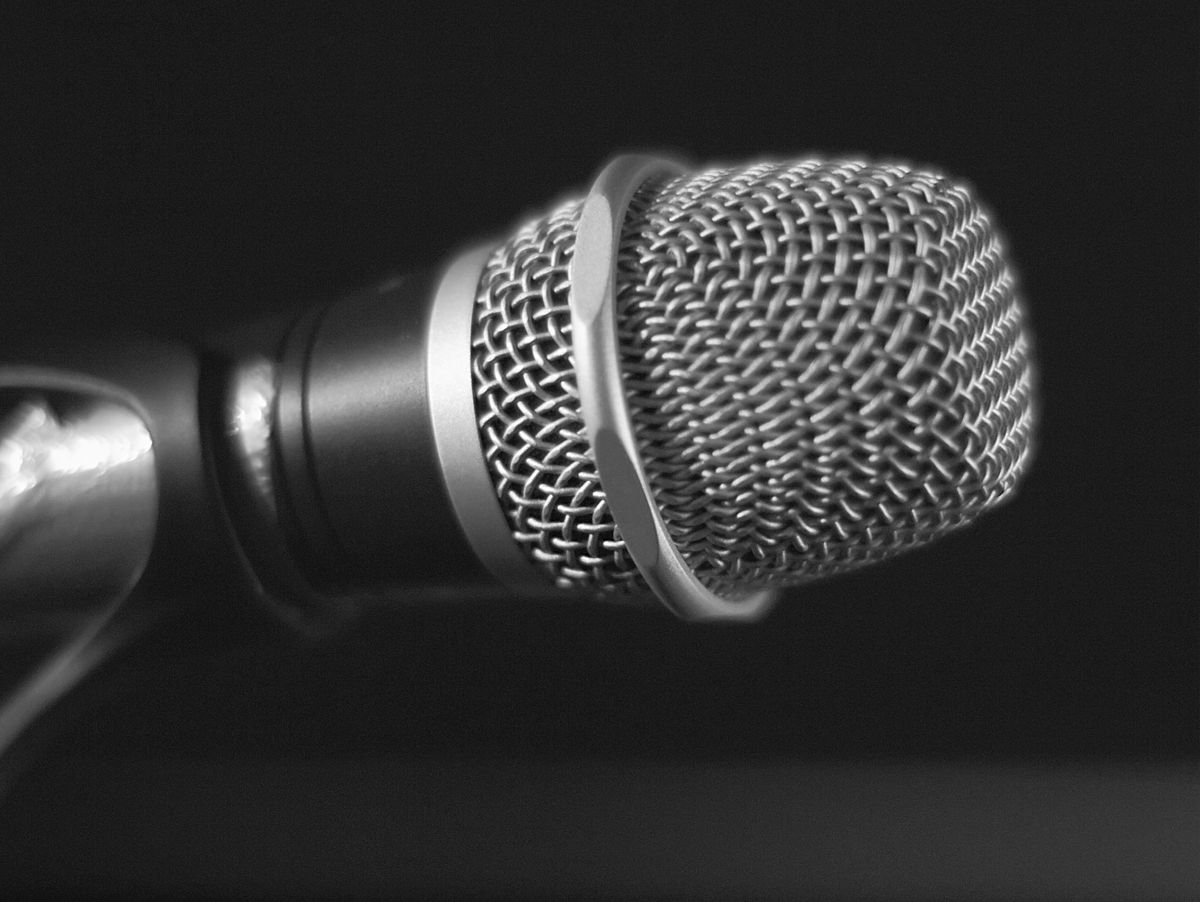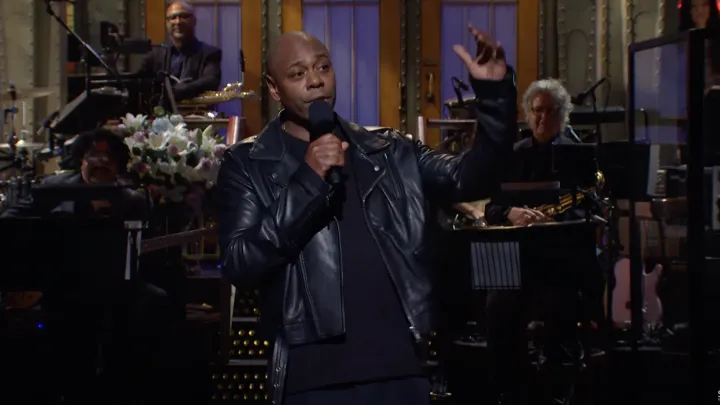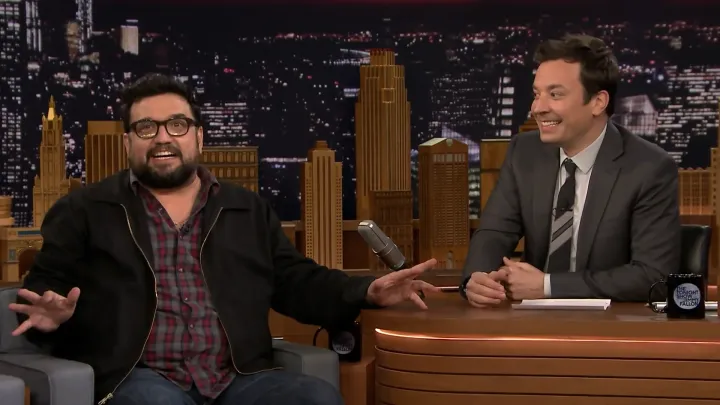Yes, You Should Still Wear A Mask At The Comedy Club
A physicist explains why state guidelines and club policies may be too lax.


In April the piecemeal reopening of comedy clubs across the country finally reached two longstanding holdouts: New York, which allowed indoor entertainment venues to reopen at limited capacity on April 2nd, and California, where indoor performances were cleared to resume earlier this month, with restrictions varying by county. In Los Angeles, which appears set to enter the least restrictive tier of reopening early next month, the Comedy Store is planning a grand reopening in its Main Room tonight. The Laugh Factory, half a mile down the street, will hold a “soft reopening” tomorrow.
The reopening of comedy’s capital cities draws renewed attention to safety issues that have dogged the industry for the past year, as headliners toured the country performing in states with differing health guidelines and negligible enforcement. Some states didn’t require masking or distancing at all; others declined to penalize clubs that ignored the rule. A number of high-profile comedians, like Dave Chappelle and Brian Regan, tested positive for Covid-19 while on the road, raising questions about audience and employee safety. Still the industry chugged indefatigably toward something resembling normalcy—albeit at reduced capacity, with a negative test result or vaccination card required at the door.
Those safety issues have never been resolved. Central to the reopening of indoor comedy is a contradiction that also defined the reopening of indoor dining, itself connected to a raft of Covid-19 outbreaks: the science says you should avoid unnecessary indoor gatherings with people outside your household, and if you can’t then you should wear a mask. The guidance clears you to remove your mask periodically throughout indoor gatherings with people outside your household, if not the entire time. In New York, comedy audiences “may temporarily remove their face covering when seated at an assigned seat/area to eat or drink.” In California, masks are “mandatory unless actively eating and/or drinking”; likewise in Ohio. In Texas, you are “strongly encouraged” to wear a mask when you can’t stay six feet away from your fellow patrons—that is, when you’re at your seat—but the state forbids local governments from enforcing mandates. In Utah, you must similarly mask up “when physical distancing is not feasible.” In Florida, you can pretty much do whatever you want, as close as you want to whoever you want: some localities still have mask orders, but as in Texas they’re barred from fining violators. The list goes on.
In practice, these rules amount to a pass on wearing a mask at comedy clubs, whether or not you’re putting food in your mouth. A brief scan of social media images taken at clubs in all the above states and more suggests that if it is not the norm for comedy clubs to adopt a “mask up if you want” policy, then they are at the very least lax about enforcing state guidelines. From these images emerge some obvious questions: Does it matter? How safe are comedy audiences under the rules as written, and how safe are they under the rules as observed?
According to Eric Schiff, a physicist who’s researched airborne transmission of Covid-19, masking up indoors is still critical—especially if you’ll be there for a while. "The first thing that counts is how much unmasked time you spend in the club," said Schiff, the interim director of Syracuse University’s Center for Excellence in Environmental and Energy Systems Innovation. As the scientific and medical community has known for almost a year, he explained, you can still catch the virus from people indoors even if they’re more than six feet away. He cited a recent study by researchers at the Massachusetts Institute of Technology, who argued that in a well-ventilated indoor space, six feet of distancing between masked people offers little more protection than 60 feet. The study suggests that in such a setting, time spent indoors is a more important consideration than social distancing. (A few extra feet of distance do make some difference when people aren’t masked, the authors said).
“That picture that you [only] catch it when you're in close contact is not correct,” Schiff said. “If there's anyone in the club infected, then whenever they breathe out, they emit a certain number of virus-carrying particles. Little tiny things, nothing like spit, nothing you can see. And it spreads a little bit like cigarette smoke might spread in the old days, at least in comedy clubs and bars. It just goes everywhere. And then if you breathe in a lungful of air that happens to have enough virus in it, you will get sick.”
Wearing a mask goes a long way toward mitigating the risk you inhale that lungful of air. But masking up only when you’re out of your seat? Not so much. “To wear a mask just for, let's say, ten minutes on the hour at the most, when you go to the bar or the bathroom, leaving 50 minutes of unmasked breathing—that would be almost no protection,” Schiff said. He added that occupancy reductions are still an important safety measure, with a 50% limit cutting the odds of transmission fourfold. (Comedy fans in Texas and Florida, beware.) While rising vaccination rates certainly help a great deal, he stressed that they don’t eliminate the risk entirely. All it takes is one infected customer to spread the virus, and Covid-19 is most contagious when people don’t know they have it—that is, when a temperature check at the door won’t catch anything wrong.
In comedy as with everything else in this pandemic, what’s technically allowed is not the sole public safety consideration. Masking, distancing, avoiding unnecessary physical contact—these things still matter, even if state guidance and club policies de-emphasize them. The virus is still out there, it’s still deadly, and it’s still everyone’s responsibility to take a full stock of the risks before venturing out to an indoor comedy show. “The best you can do is say, well, if there's a lot of cases in the community, then there might be one here," Schiff ultimately advised. "If the caseload in the community is very low, you're pretty safe."
Header image via Terry Ross/Flickr.


